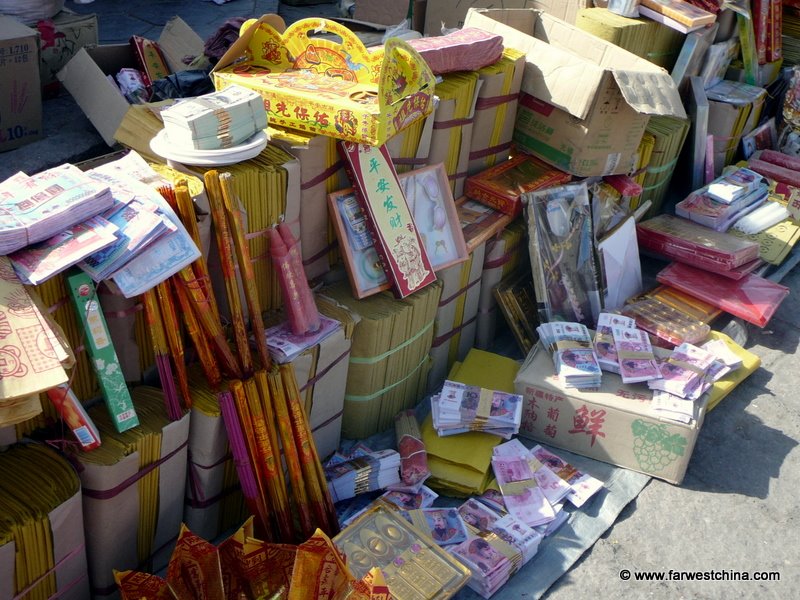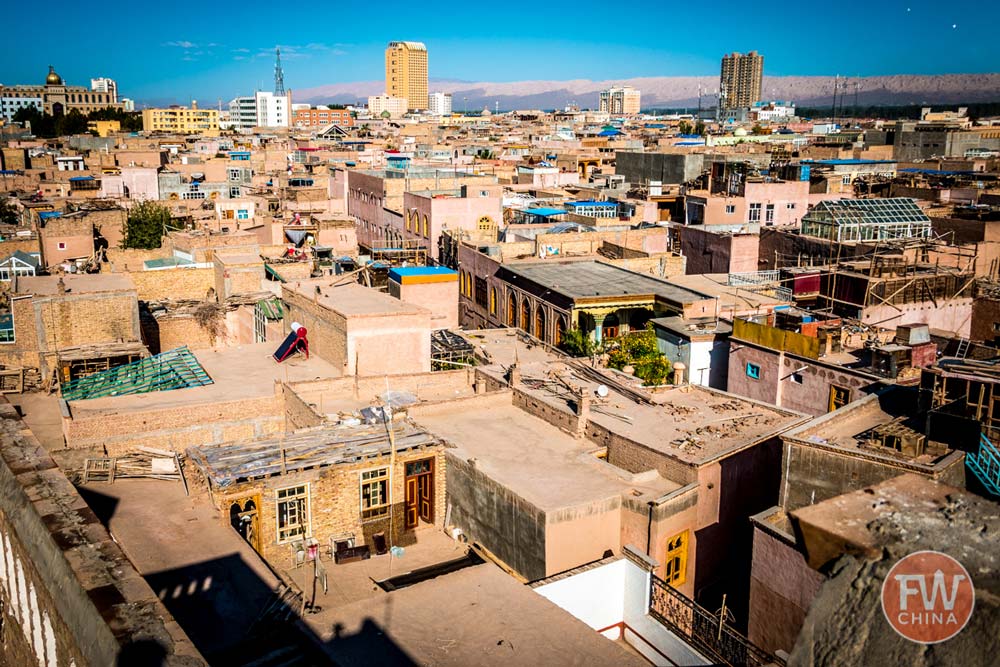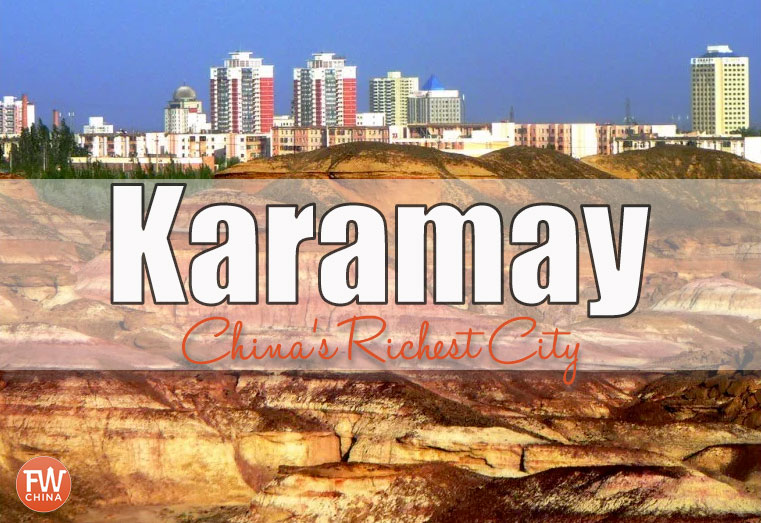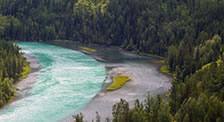A Xinjiang Cemetery for Tomb Sweeping Day
It’s all out again, just like it was last year at this time.
Yellow paper, incense, fake RMB and even some good old US dollars for good measure. Until today I didn’t know there was a $500 US bill.
Currently the makeshift stands selling all this stuff number more than the Uyghur bread stands here in Xinjiang, which says a lot for those of you who’ve never been here.
This weekend – Saturday to be exact – is 清明节 (QingMing Jie), a holiday also known as “Tomb Sweeping Day” or “All Souls Day”. Although it has been a holiday in Taiwan, Hong Kong and Macao for quite some time, it was just added as a public holiday on the mainland last year, along with a much-needed day off on Monday.
I grew up relatively close to Mexico, so my closest association with a holiday like this is Dia de Los Muertos or “Day of the Dead”. The purpose of these holidays is to take time away to honor and remember one’s ancestors, but since I don’t have any family buried on Chinese soil (that I know of) I have taken a couple trips to our local cemetery just for the adventure as well as to quench my curiosity. This weekend many people here will be making that same journey out to these grave sites to burn money, set out incense and sweep the tombs (literally) so I thought it might be an appropriate time to share with you my experience visiting a Xinjiang cemetery.
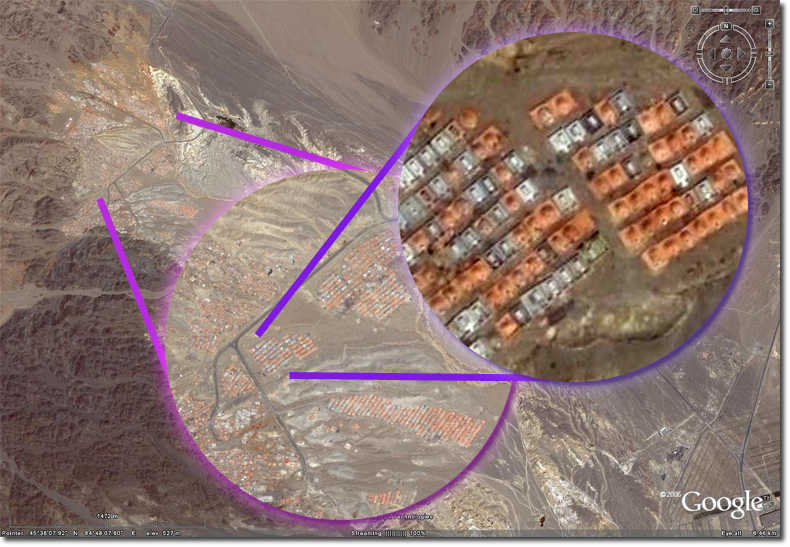
>My adventure started on Google Earth, of all places. While mapping out good biking routes outside the city limits I ran across an odd-looking group of objects that took up a huge portion of land to the north.
Some users in Google’s community had already found and commented on this area, speculating that it was some sort of local grave site and from that moment on I was hooked. I was going to have to see it for myself. It was about 8km outside the city, which is a long distance when you realize the city where I live only spans about 10km from north to south, but one Saturday morning my wife and I woke up early, filled our water bottles and hopped on our bikes for a good uphill climb to find out what this place was.
From the time we left the city until we reached the graveyard we were surrounded by lifeless desert. The road was paved but rarely used because it only had one destination.
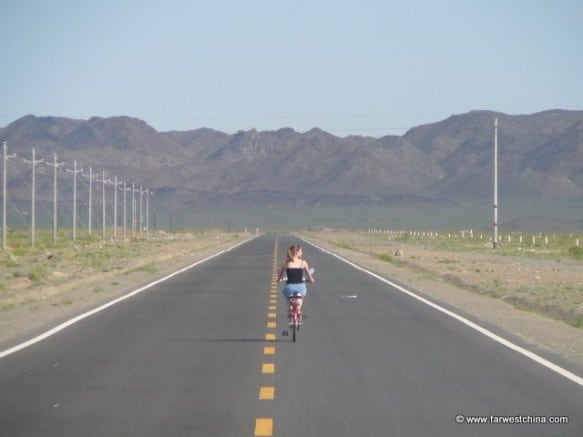
Half way along our journey we were approached by a huge ditch digger whose driver was obviously perplexed to see two foreigners riding along a dead-end road. He was a middle-aged man with wild hair and a funny smile, most likely a migrant worker from another province just trying to make ends meet by working at the local cemetery.
“Do you know where you’re headed?” he asked us, hoping we understood his Chinese.
“I think so” I replied. “Isn’t this the direction to the cemetery?”
“Yea, it is. What makes you want to go there?” he said, smirking the entire time.
I couldn’t think of an answer. “Just curious.”
It’s not that I was keeping a secret from him, I just didn’t quite know what to say.
“Well, do you want a ride?” he said as he pointed to the over-sized shovel on the front of the vehicle.
I looked at my wife and we both laughed. Sure would be fun, but where we would store our bikes? Sadly, we were forced to decline. He just smiled and waved goodbye, sputtering off to probably go and dig another grave, happy that he had his own interesting story to share with his friends and family that night.
A few kilometers later and the road ended, a small stone sign indicating that the dirt path to the left would lead us where we wanted to go. The cemetery was hidden behind a few small hills as we approached, so up until this point we had seen nothing but barren land. It wasn’t until we turned a blind corner in the dirt path that the full view of our town’s cemetery came into view.
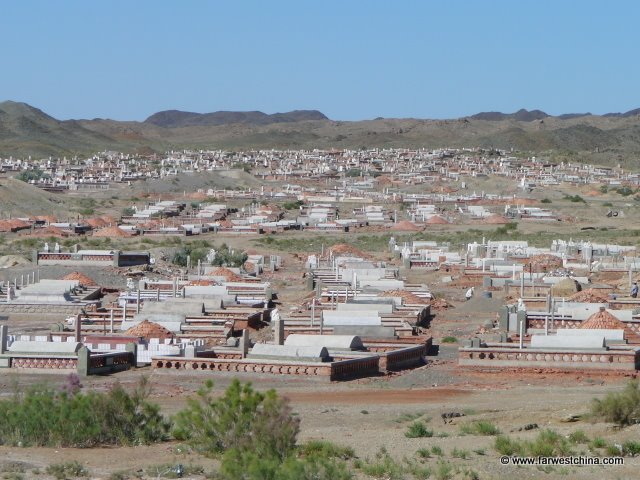
At first we were struck not by the designs of the tombs – we were too far away to see all the details just yet – but rather by the incredible number of tombs. It was almost hard to believe that this represented our city, a city that had only just recently celebrated its 50th birthday. Another small sign along the dirt path informed us that this cemetery was actually very well organized and divided into sections each with their own set of roads and small paths.
Another detail that immediately presented itself was the stark contrast between the square Han burial sites and the rounded Uyghur mounds. Not only was there a difference in design, but the gap in how much money was spent on these graves was noticeably wide, a difference that in some ways mirrored the city housing just 8km down the road. Not surprising was that I saw segregation also existed among the dead.
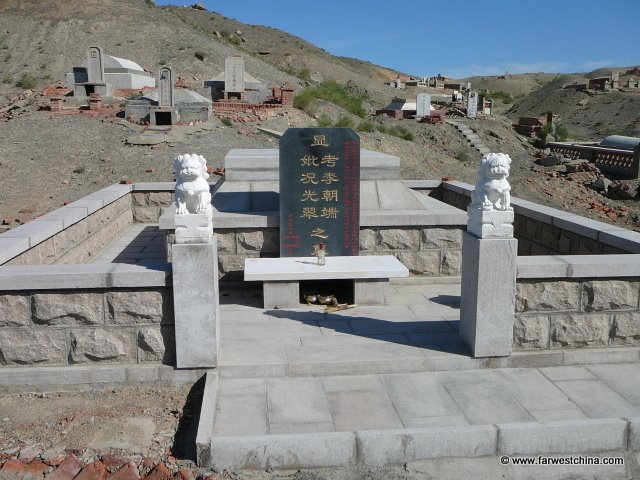
A Han tomb (above) vs a Uyghur tomb (below)
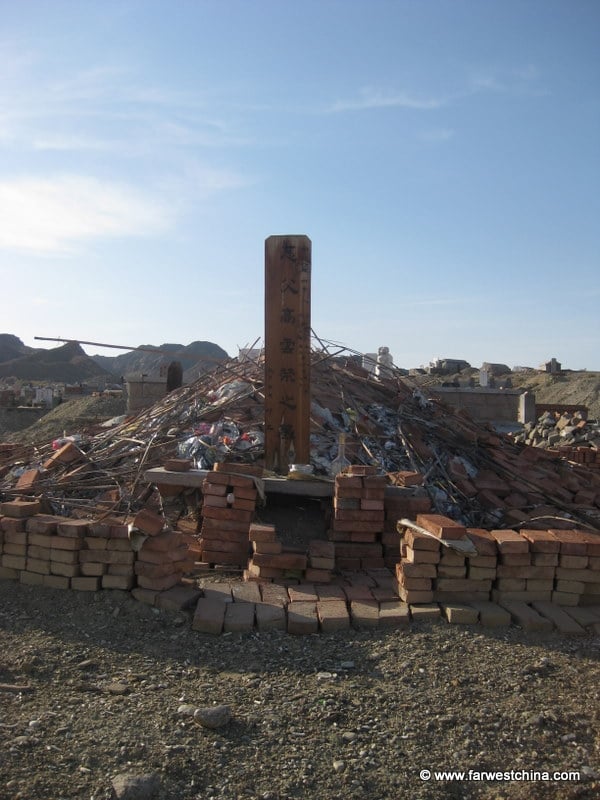
We parked our bikes and started hiking around the graveyard, pretty much the only people there besides tractor guy far on the other side digging up more land. Our first stop was a Han grave where we were greeted by two lions guarding the entrance, a common theme we saw as we walked around.
Most of these plots were surrounded by a short wall with an above-ground coffin situated in the middle. On the front side of this coffin near the entrance was a small concrete table with a plaque attached stating the usual tombstone information. The table was full of rotted fruit and half-burned fake money, a sign that relatives had recently visited.
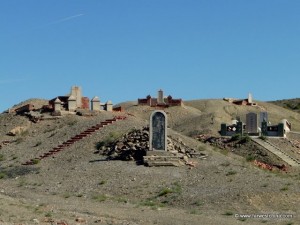
Some of these graves were made for one person, others for a family, but all had a similar design. During the Tomb Sweeping holiday family will come here to clean up the grave, burn money, and lay out a meal for the deceased. One even had the smell of liquor that had been poured all around the plot – heaven forbid their ancestors don’t have the opportunity to get drunk in the afterlife!
Across the dirt road the Uyghur graves were much more simple. Instead of being a small, open-air temple, it can be best described as a mound of dirt. Usually covered with mud brick, these mounds are marked by a wooden board inscribed with names and dates. There’s not much to clean around here, so I doubt many Uyghurs come to sweep the tombs during the holidays.
We’ve seen traditional Uyghur graves in Kashgar before, but for some reason the ones here lack the beauty, charm, and religious appearance. You can tell the newer graves from the older ones by how much the sun has bleached the mud-orange brick that tile the mounds. These earth tones seem to match the colors of the desert much better than the concrete graves up the hill.
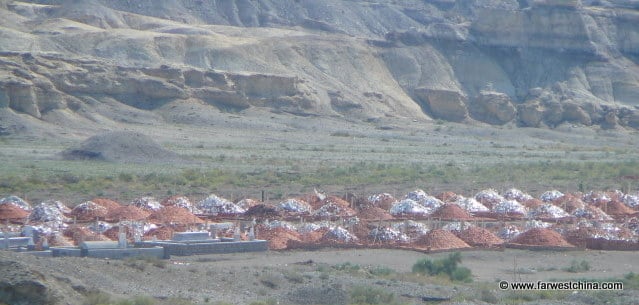
Up until now we had been meandering through the many grave sites silently, enjoying the peace and quiet until we began to hear the distant sound of a car approaching. When we looked up we realized it wasn’t just one car. More than 30 cars in a row were slowly, almost sadly, trudging up the lone road from the city. This line was led by a miniature truck carrying a wooden box in the back.
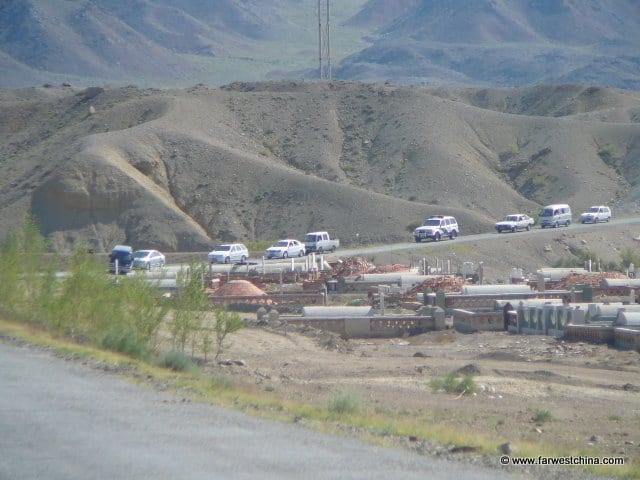
Out of respect for the family and because we were getting quite hot under the beating sun, we decided this was our invitation to grab our bikes and camera and leave.
While biking back towards the city we turned our heads in time to see all the cars gathered along a single hill, it’s occupants together to mourn the recent loss of a loved one.
For most of us these small dirt mounds and concrete beds are an interesting phenomenon we can see from Google Earth satellite pictures or talk about on a blog, but I was reminded that day that each of these represents the story of a person who lived and died.
These are the lives that will be remembered on April 4th, 2009 as millions of Chinese gather around tombs just like these to celebrate QingMing Jie – Tomb Sweeping Day.

